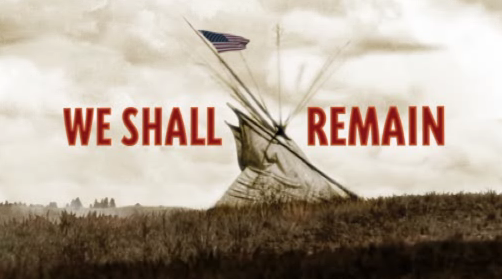Caneoing in Tecumseh’s Wake
28 Apr
 Was it just us or did you watch last week’s PBS We Shall Remain episode titled Tecumseh’s Vision about the Shawnee leader and his village at the confluence of the Wabash and Tippecanoe Rivers and ask: I wonder what the paddling is like there nowadays?
Was it just us or did you watch last week’s PBS We Shall Remain episode titled Tecumseh’s Vision about the Shawnee leader and his village at the confluence of the Wabash and Tippecanoe Rivers and ask: I wonder what the paddling is like there nowadays?
Thanks to the Ric Burns film’s landscape-caressing aerial shots, the history-soaked landscape they filmed, and our own innate desire to put a boat on interesting water, we wanted to learn more about the paddling prospects around Tecumseh’s old haunts.
It turns out, the Tippecanoe is a fine river to paddle a canoe upon — and, we presume, keep it upright. According to the Indiana Department of Natural Resources, the Tippecanoe is a clear, 166-mile long river that’s a pleasant paddle from Warsaw to its junction with the Wabash at Prophetstown State Park near Battle Ground.
The 475-mile long Wabash River is also a worthy Indiana paddling destination. The Wabash, although it originates and flows its first 30 miles in Ohio, is the Hoosier’s state’s signature river. The Wabash, which merges with the Ohio River at Mount Vernon, Indiana, was an important communication link between the lower Great Lakes and Mississippi River in the era of water transportation.
At the “Tipy’s” confluence with the Wabash in 1808, Tecumseh and his brother Tenskwatawa, “The Prophet,” gathered a multi-tribe Native American community known as Prophetstown. The Shawnee brothers sought to live separate from American settlers and to regain the traditional lands of the Shawnee and other tribes.
In 1811, at the Battle of Tippecanoe, which took place along the Wabash River just downstream of its namesake river, the Prophetstown Natives inflicted losses on William Henry Harrison’s U.S. forces in a surprise attack, but were forced to abandon their village which the army then ransacked and burned.
Tecumseh, who was not present at the Battle of Tippecanoe, lost his life two years later fighting with the British in the War of 1812 in an alliance he hoped would return what is now Indiana and Ohio to the his people. Tenskwatawa, who lived until 1836, died in a village he founded near Kansas City.










